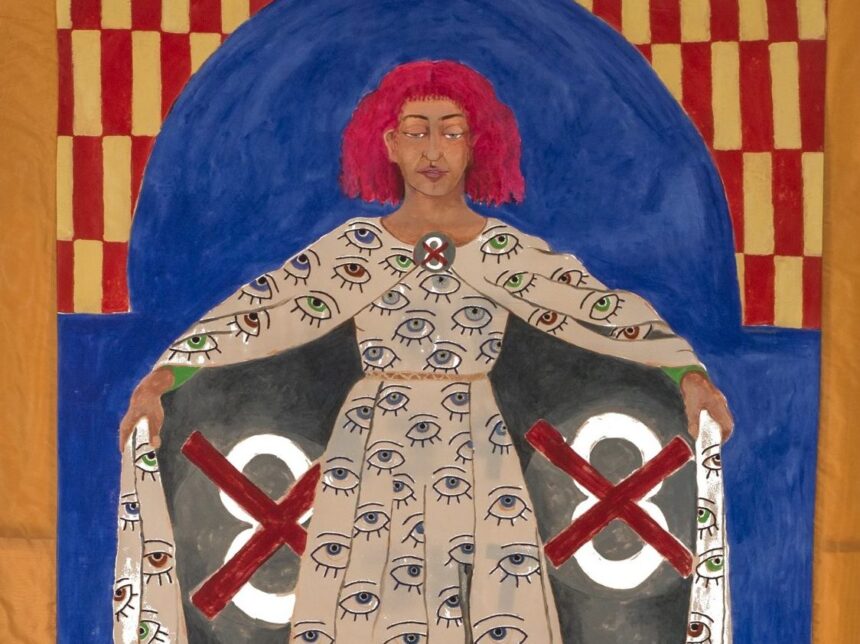Report from Ireland: Repealing the Eighth Amendment
Emma Mahony
In May 2018, Irish citizens voted overwhelmingly to repeal the Eight Amendment, a law which afforded a fetus the same legal rights as its mother.[1] Under the Eight Amendment, which was passed in 1983, abortion was illegal in the Irish State, even in cases of rape and fatal fetal abnormalities. Irish women who travelled outside the State to terminate a pregnancy, and those ordering abortion pills over the internet, faced a prison sentence of up to fourteen years if convicted.[2]
Since the foundation of the Irish State, consecutive governments have enacted legislation that has had the effect of denying women both political and bodily autonomy. In 1932 legislation was introduced that forced women working in the public sector to quit their jobs upon marriage (revoked in 1973). Other laws included a legal ban on the use of contraception (which was only revoked in 1979), a ban on divorce (revoked in 1990), and the non-recognition of ‘marital rape’ (until 1996).
The proposition I want to make in this report, is that the human rights violations (centered on the issue of bodily autonomy for women), that were at the epicenter of this referendum, galvanized Ireland’s artistic community around them, and that the successful outcome has been largely shaped and driven by artistico-activist interventions. I will limit my focus here to The Artists’ Campaign to Repeal the Eight Amendment, which was launched in 2015 by artists Cecily Brennan, Eithne Jordan and Alice Maher, and poet Paula Meehan. The Artists’ Campaign created a public face for the Repeal side around which discussion, debate, dispute and protest took shape.[3]
One of the major artistic outputs of the The Artists’ Campaign was the production of three elaborate protest banners by Maher, Rachel Fallon and Breda Mayock. The visual language employed in the design of the Repeal banners was unique and impactful insofar as it brought together art historical references with the material culture of political banner making on the Island of Ireland (North and South). The banners produced by left-wing Trade Unions (including the Irish Women Workers Union) in the Republic of Ireland, and those produced by conservative and reactionary political groups in Northern Ireland (including the Orange Order and the Apprentice Boys of Derry) were all sources of inspiration. In the Republic banners identifying the trades and guilds of their bearers became a familiar sight at political rallies in first half of the nineteenth century. These banners were often elaborately crafted with each guild competing for the most visually striking banner design. In the North of Ireland, sectarian societies still carry banners during political marches, most notably during the annual Twelfth of July pageantry, which marks the victory of the protestant William of Orange over the Catholic King James II in 1690.


The art historical references utilized in the banners include “the Sheltering-cloak Madonna”–a motif depicted in the paintings of Piero della Francesca, which forms the inspiration for the ‘Madonna of Repeal’, the underside of whose vast cloak was embroidered with the slogan of the movement: the number 8 with a red X striking through it. The second banner was based on the painting of David and Goliath by Orazio Gentilescho (c.1605-8). Here, the figure of David was replaced by a young woman fearlessly wielding her sword at a dragon representing the Eight Amendment. The third banner was based on a scarf designed by the British artist, Grayson Perry, which depicts a series of vignettes that map out the life of the artist. Utilizing a similar story-telling design, the artist is replaced with a woman facing an unwanted pregnancy and her trials and tribulations play out in the vignettes. The most visually striking of these vignettes depicts a naked woman subjected to a game of tug-of-war between two figures that represent the cornerstones of Ireland’s patriarchal culture: a wigged judge (representing the State) and a Bishop in full ceremonial dress (representing the Church).

A further series of smaller banners depicting the “all-seeing eye” motif, were created by the artist Àine Phillips. Rachel Fallon created a series of Aprons of Power, which juxtaposed the motif of the eye with military mottos including: “To ensure hope is our role” and “Fortitude overcomes all difficulties”. The slogans were designed to be revealed when their wearers unfurled them and held them up in front of their faces in a performative gesture.

The banners were first displayed at the March for Choice, held in Dublin in September 2017 and were subsequently utilized in other protest settings. Having built up a significant momentum, both amongst the art community and in the public realm, The Artists’ Campaign was invited to exhibit in EVA International–Ireland’s Biennial (EVA), 2018 in Limerick, curated by Inti Guerrero.
Their contribution to EVA included a performative procession through the streets of Limerick City, which sought to highlight the long history of repression Irish women have been subjected to. The procession began at the Limerick School of Art, where Maher read a statement to mark its dark history as a former Magdalene Laundry–an institution run by the Catholic Church and supported by the State, where unmarried pregnant women were incarcerated and forced to labor in slave-like conditions.[4] The solemn procession, comprised of banner carriers, dancers, musicians and performers, then snaked its way through the streets of the city before culminating outside the EVA’s largest venue, with a rendition of “This is How we Rise” by Mayock, a sombre and empowering ballad she had composed for the occasion. Members of the public were then invited to participate in a ritual shredding performance, where they could feed a piece of paper printed with the figure “8” through an electric shredder.
The banners were subsequently displayed for the duration of the exhibition, alongside archival materials of the Campaign and a recording of the testimonies by women who were adversely effected by the Eight Amendment, made at the Project Arts Centre in Dublin.
What was arguably so successful about the Artists’ Campaign, was its carefully considered tone, which centered on what the organizers described as a ‘hopeful’ visual culture that sought to empower women and engender a solidarity with the many victims of the Eight Amendment. This approach differed greatly to the shock tactics utilized by the “No” or “Pro-Life” side, which as the referendum campaigned unfolded, resorted to moralistic outbursts and the dissemination of visceral images of aborted fetuses.
Art activism, then, succeeded in lending a third dimension to the political discourse surrounding the abortion debate; it opened up a space for discussion and reflection that was not closed down by black and white moralistic stances.
Dr. Emma Mahony works as a lecturer in the School of Visual Culture at the National College of Art & Design (NCAD), Dublin. She also works as post-doctoral research assistant at the Royal College of Art (RCA), London, and as dissertation committee member for the Media, Art and Text Ph.D. Program at Virginia Commonwealth University. She sits on the editorial board of Art & the Public Sphere journal. From 2004-8 she was Exhibition Curator for Hayward Touring, Southbank Centre, London. Her research, which investigates the relationship between contemporary art, curatorial studies, radical pedagogy and activism, has been published in journals such as Performance Research, Curator: The Museum Journal, Museum & Society, Anarchist Studies Journal, and Art & the Public Sphere. Together with Dr. Mel Jordan of the Royal College of Art (RCA), London, she is co-leading a number of international, multi-interdisciplinary and cross sectoral research bids, which focus on identifying and articulating the types of value produced by social art practice.
Notes
[1] 66.4% of the Irish electorate voted Yes to Repeal the Eight Amendment.
[2] New legislation came into effect on January 1st, 2019, which extends the legal right to Irish women to access terminations up to twelve weeks’ gestation, and later in cases where the pregnant woman’s life or health is at risk, or in the cases of fatal fetal abnormality.
[3] Other notable artistic campaigns include the “Repeal the 8th” mural painted by the street artist Maser on the exterior wall of Project Arts Centre in Dublin’s Temple Bar in 2016, and again in April 2018.
[4] In 2013 the Irish State belatedly issued a formal apology to all the women and children interned in these Laundries and industrial schools, and introduced a compensation scheme (to which the Catholic Church has yet to contribute).







